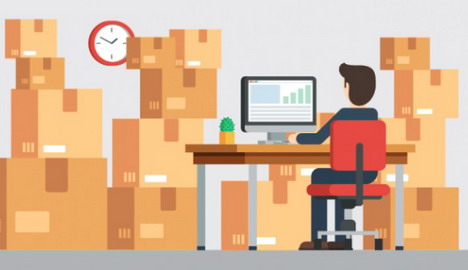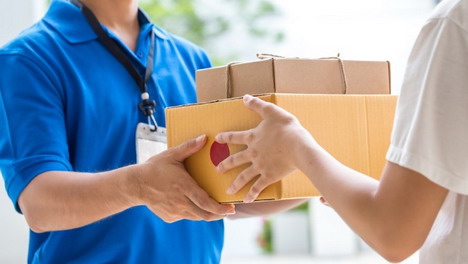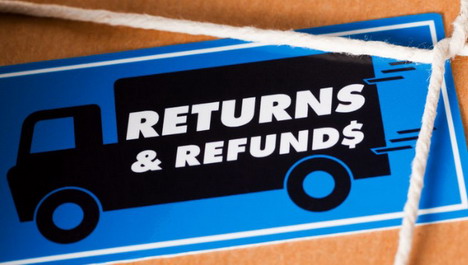How to Build E-Commerce Customer Loyalty through Supply Chain
Succeeding in e-commerce requires staying in tune with a plethora of touch points. Doing so is a constant challenge. But at the same time, the vast array of details brands must focus on presents more opportunities to improve processes that in turn build customer loyalty.
In an age of heightened customer experiences, vast product selection, and unprecedented convenience, the supply chain is the critical factor in brands maintaining healthy balance sheets while still appeasing customers.
In theory, developing a supply chain is simple: you store products, pick and package items upon receiving orders, then ship the products to the listed addresses. But what happens when deliveries are delayed, products are damaged, and customers decide they no longer want their orders?
Brands that aren’t organized and committed to presenting a uniform customer experience through their supply chains have an uphill battle ahead. After all, 65 percent of a company’s business comes from existing customers. It also costs anywhere from five to 25 times more to acquire a new customer than it does to retain a returning one. And, if a store lowers its churn rate by just five percent, it can increase its profitability by 25–125 percent.
Now that you’re on board, let’s discuss how to build e-commerce customer loyalty through your supply chain.
1. Real-Time Shipment Tracking
Our world is more connected than ever, so it’s no surprise that customers want to know the status of their online orders at all times. Give your customers closure and transparency (and save your customer service team a lot of time handling delivering queries) with automatic shipment tracking emails that send to customers every time their shipment reaches a new leg of its journey. For example, “Picking products to package” or “Product left warehouse” could be the first notification with subsequent updates providing location updates, such as “Departed Memphis International Airport via Freight Flight 390878 at 5:25 p.m.” or “Arrived at Sacramento FedEx receiving, preparing for ground delivery.”
It’s important not to bombard customers with pedantic updates while still keeping them in the know at every major stage of the fulfillment process. Real-time tracking also helps you avoid customer-service blow ups on matters outside of your control. Since you don’t have control over the actual delivery of your products, if something goes wrong that will delay the shipment, the customer will instantly get a notification and adjust their expectations. Nobody likes delays, but guests will appreciate the proactive communication, and likely won’t hold it against your brand personally. Real-time tracking is also helpful if your product requires a signature on delivery or a customer to be present, such as in a high-trafficked location where package theft occurs).
2. Optimize Inventory to Avoid Out of Stocks and Backorders
Maintaining adequate inventory levels is undoubtedly simpler for an e-commerce store than a brick-and-mortar. However, with e-commerce, purchasing volumes can change in an instant, especially with seasonal trends. When an e-retailer isn’t prepared, out of stocks and backorders abound. This not only loses you the sale but also breeds dissatisfaction in the customer—they tried to buy something from you, but you couldn’t fulfill your end of the deal. If you host your store with a platform like Shopify and sell everyday products online such as electronics, you can bet the customer will bounce off your site and search for the product elsewhere. In other words, poor inventory management costs you sales (and in all likelihood, a customer) you’ll never get back.
3. Affordable On-Time Deliveries
Love it or hate it, Amazon has single-handedly changed consumer expectations around shipping cost and delivery times. While you may be scratching your head trying to figure out how to offer two-day free shipping, don’t kill your business by lowering your margins to the point where you’re barely making any profit. Instead, there are a couple things you can do.
Offer a free-shipping threshold (e.g., “Free Shipping on Orders over $50!”). The specific amount will depend on what you sell and your operating margins, but offering a free-shipping threshold entices customers to buy more from you and still get the intrinsic value of not having to pay for shipping. The other thing you can do is be as transparent as possible about your shipping costs. If you wait until the last checkout screen to display your shipping costs, you’ll lose customers on principle alone. Even if the customer purchases anyway, they may still be left with a bad taste in their mouth and look to other brands for future purchases.
4. No-Hassle Returns
E-commerce return rates hover around 30 percent. For online clothing stores, that rate can exceed 40 percent. Returns and online shopping will be forever entwined to some degree, but stores can help their bottom lines and reputations by focusing on a smooth and efficient return experience. The first step is to expect returns. This is the only way to develop processes that reduce operating expenses and ensure customer satisfaction.
Have customers go through a few forms to process their return. These forms will allow you to gather the return information and product condition to determine how it’ll be handled once your fulfillment process receives it. Automate prepaid shipping labels to send via email once the customer finalizes the return. And, if packages can be given to the mail service right from the guest’s address, you’ve officially made their experience as seamless as possible. As a final touch, refund the customer as soon as you receive the returned items. A quick and easy return experience can still turn sour for customers if they have to wait for their refund.
If you can do all this, keep your head up; you may have lost the sale this time, but offering a no-hassle return process will keep you in the customer’s mind next time they’re looking to buy.
5. Prompt & Positive Communication
Whether it’s a negative product review or a customer asking whether a package will require their signature on delivery, every guest interaction needs to be helpful, positive, and timely. One or two of the three won’t cut it. Consider that 57 percent of customers would stop using a brand if they had a negative review go unaddressed, and 42 percent of customers would stop using a brand if the company didn’t have a real-time customer support line.
If the customer’s query can’t be answered right away, they should still receive a quick and upbeat response explaining that they’re working on the support ticket and will have an answer in a specified time frame. If a rep answers a customer’s question, but takes a week to respond to the ticket, the customer will understandably be annoyed. If messaging is ever relayed in a less-than-positive manner, then the timeliness and thoroughness of the answers will be diluted.
In addition to maintaining a live-support line and regularly monitoring for reviews about your brand, build in features that save your customer reps time and facilitate customer knowledge discovery. Things like a concise, yet in-depth FAQ section and live chatbot program will alleviate your reps from continually handling the same support tickets.
Ninety-two percent of loyal customers rank price and value as the top reasons why they stay loyal to brands, but even these things can’t compensate for mal-performing customer service, fulfillment, and reverse logistics processes. Building loyalty through the supply chain starts with meeting customer expectations and is fueled by ongoing positive communication, stellar guest service, and reliable supply chain operations.
Tags: business, e-commerce, how to, tips & tricks














































